mRNA expression pattern of selected candidate genes differs in bovine oviductal epithelial cells in vitro compared with the in vivo state and during cell culture passages
- PMID: 27526775
- PMCID: PMC4986246
- DOI: 10.1186/s12958-016-0176-7
mRNA expression pattern of selected candidate genes differs in bovine oviductal epithelial cells in vitro compared with the in vivo state and during cell culture passages
Abstract
Background: The mammalian oviduct provides the optimal environment for gamete maturation including sperm capacitation, fertilization, and development of the early embryo. Various cell culture models for primary bovine oviductal epithelial cells (BOEC) were established to reveal such physiological events. The aim of this study was to evaluate 17 candidate mRNA expression patterns in oviductal epithelial cells (1) in transition from in vivo cells to in vitro cells; (2) during three consecutive cell culture passages; (3) affected by the impact of LOW or HIGH glucose content media; and (4) influenced by different phases of the estrous cycle in vivo and in vitro. In addition, the release of a metabolite and proteins from BOEC at two distinct cell culture passage numbers was estimated to monitor the functionality.
Methods: BOEC from 8 animals were isolated and cultured for three consecutive passages. Total RNA was extracted from in vivo and in vitro samples and subjected to reverse transcription quantitative polymerase chain reaction to reveal mRNA expression of selected candidate genes. The release of prostaglandin E2 (PGE2), oviduct-specific glycoprotein 1 (OVGP1) and interleukin 8 (IL8) by BOEC was measured by EIA or ELISA after 24 h.
Results: Almost all candidate genes (prostaglandin synthases, enzymes of cellular metabolism and mucins) mRNA expression pattern differed compared in vivo with in vitro state. In addition, transcription of most candidate genes was influenced by the number of cell culture passages. Different glucose medium content did not affect mRNA expression of most candidate genes. The phase of the estrous cycle altered some candidate mRNA expression in BOEC in vitro at later passages. The release of PGE2 and OVGP1 between passages did not differ. However, BOEC in passage 3 released significantly higher amount of IL8 compared with cells in passage 0.
Conclusion: This study supports the hypothesis that candidate mRNA expression in BOEC was influenced by transition from the in vivo situation to the new in vitro environment and during consecutive passages. The consequence of cell culture passaging on BOEC ability to release bioactive compounds should be considered.
Keywords: Cell culture passage; Culture medium; Enzymes of cellular metabolism; Mucin; Oviduct; Prostaglandin synthase; mRNA expression.
Figures
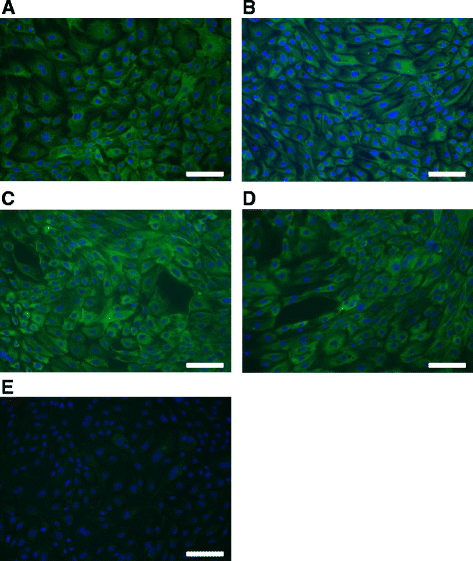
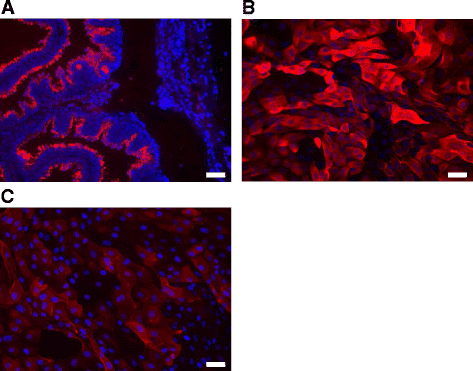
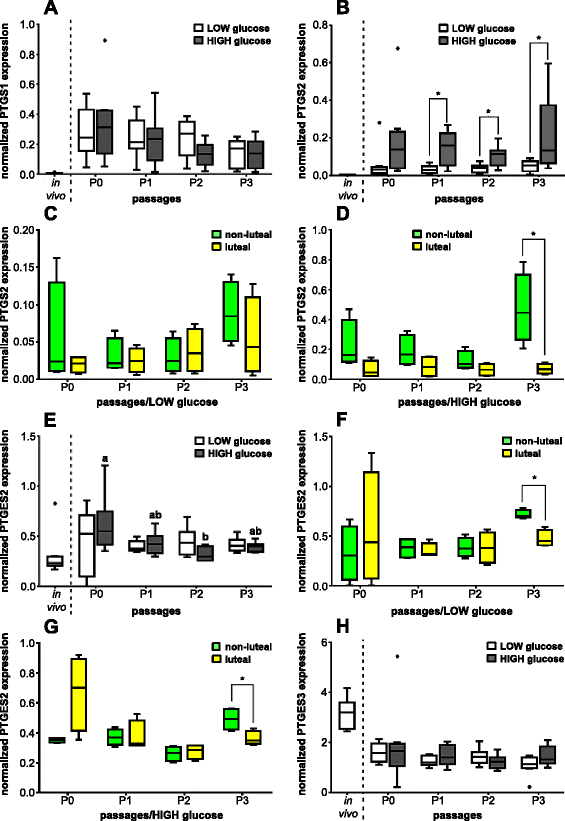
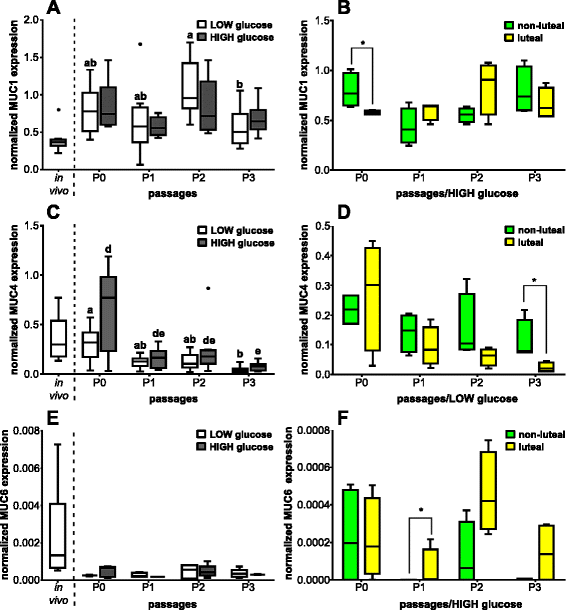
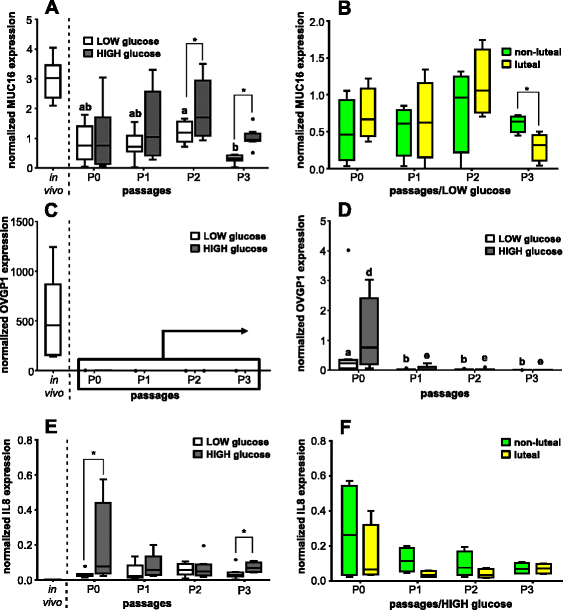
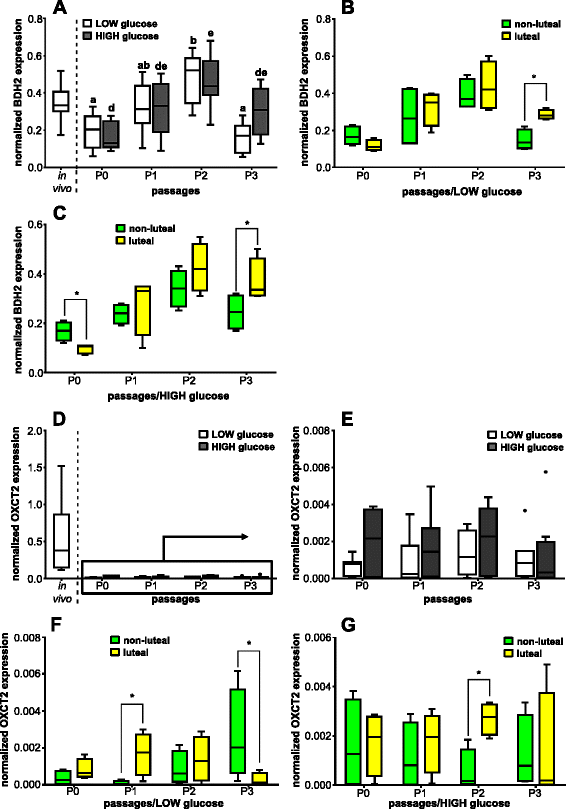
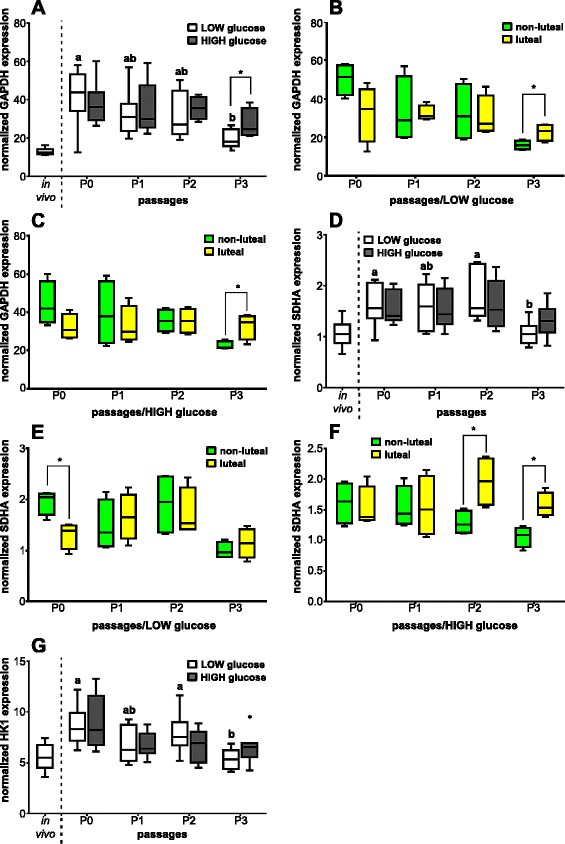
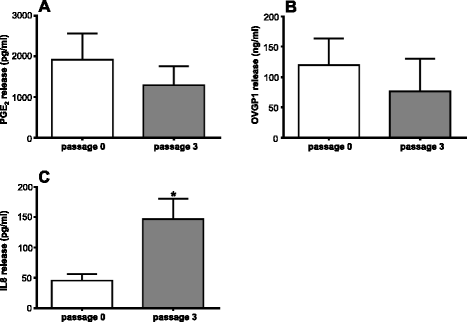
Similar articles
-
Different inflammatory responses of bovine oviductal epithelial cells in vitro to bacterial species with distinct pathogenicity characteristics and passage number.Theriogenology. 2018 Jan 15;106:237-246. doi: 10.1016/j.theriogenology.2017.10.005. Epub 2017 Oct 5. Theriogenology. 2018. PMID: 29096271
-
Vascular endothelial growth factor system in the cow oviduct: a possible involvement in the regulation of oviductal motility and embryo transport.Mol Reprod Dev. 2005 Dec;72(4):511-20. doi: 10.1002/mrd.20379. Mol Reprod Dev. 2005. PMID: 16155957
-
Bovine oviduct epithelial cells downregulate phagocytosis of sperm by neutrophils: prostaglandin E2 as a major physiological regulator.Reproduction. 2013 Dec 24;147(2):211-9. doi: 10.1530/REP-13-0375. Print 2014 Feb. Reproduction. 2013. PMID: 24255155
-
In vitro systems for intercepting early embryo-maternal cross-talk in the bovine oviduct.Theriogenology. 2010 Apr 1;73(6):802-16. doi: 10.1016/j.theriogenology.2009.09.036. Epub 2009 Dec 5. Theriogenology. 2010. PMID: 19963260 Review.
-
Local immune system in oviduct physiology and pathophysiology: attack or tolerance?Domest Anim Endocrinol. 2016 Jul;56 Suppl:S204-11. doi: 10.1016/j.domaniend.2016.02.005. Domest Anim Endocrinol. 2016. PMID: 27345318 Review.
Cited by
-
Long-Term In Vitro Culture Alters Gene Expression Pattern of Genes Involved in Ontological Groups Representing Cellular Processes.Int J Mol Sci. 2024 Jun 28;25(13):7109. doi: 10.3390/ijms25137109. Int J Mol Sci. 2024. PMID: 39000215 Free PMC article.
-
Long-term culture of feline oviduct epithelial cells on permeable filter supports.Cytotechnology. 2022 Oct;74(5):531-538. doi: 10.1007/s10616-022-00542-2. Epub 2022 Sep 5. Cytotechnology. 2022. PMID: 36238264 Free PMC article.
-
Identification of Reference Genes for Circadian Studies on Brain Microvessels and Choroid Plexus Samples Isolated from Rats.Biomolecules. 2021 Aug 17;11(8):1227. doi: 10.3390/biom11081227. Biomolecules. 2021. PMID: 34439891 Free PMC article.
-
Bovine oviductal organoids: a multi-omics approach to capture the cellular and extracellular molecular response of the oviduct to heat stress.BMC Genomics. 2023 Oct 27;24(1):646. doi: 10.1186/s12864-023-09746-y. BMC Genomics. 2023. PMID: 37891479 Free PMC article.
-
Three-Dimensional Magnetic Bioprinting Spheroids as an In Vitro Model to Study the Oviductal Physiology.Mol Reprod Dev. 2025 Aug;92(8):e70049. doi: 10.1002/mrd.70049. Mol Reprod Dev. 2025. PMID: 40838423 Free PMC article.
References
Publication types
MeSH terms
Substances
LinkOut - more resources
Full Text Sources
Other Literature Sources
Miscellaneous

